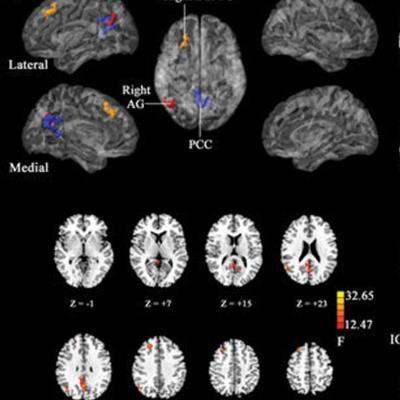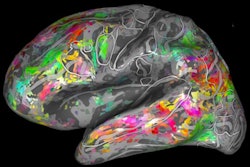
Functional MRI (fMRI) exams have revealed that internet gaming disorder (IGD) is associated with gender-specific changes in the brain. Men have alterations in brain regions that affect impulse control, while women do not, according to research presented on Wednesday at the RSNA meeting in Chicago.
Researchers led by senior author Dr. Yawen Sun of Ren Ji Hospital in Shanghai sought to investigate if there were any gender differences in brain function and structure with IGD -- a condition characterized by compulsive playing of online games to the exclusion of other interests.
They performed resting-state fMRI on 32 men and 23 women with IGD, as well as 30 male and 22 female age-matched healthy controls. Next, the researchers examined relationships between brain activity on fMRI and scores on the Barratt Impulsiveness Scale-11 test, which is used to assess behavioral inhibition.
Men with IGD demonstrated alterations in both regional- and network-level brain function, particularly showing lower brain activity in the superior frontal gyrus. These brain alterations were not found, however, in the women with IGD. This and other differences in the study suggest there may be gender-specific patterns in IGD, according to the researchers.
 A: Images show brain regions with sex (male, female) and diagnosis (IGD, healthy control) interactions in functional connectivity (FC). B: Male participants with IGD showed lower FC values between the orbital part of the left superior frontal gyrus and the posterior cingulate cortex, the right angular gyrus, and the right dorsolateral prefrontal cortex than male healthy controls. Male participants with IGD also exhibited lower FC values between the orbital part of the left superior frontal gyrus and the posterior cingulate cortex than female participants with IGD. Image courtesy of Dr. Yawen Sun and RSNA.
A: Images show brain regions with sex (male, female) and diagnosis (IGD, healthy control) interactions in functional connectivity (FC). B: Male participants with IGD showed lower FC values between the orbital part of the left superior frontal gyrus and the posterior cingulate cortex, the right angular gyrus, and the right dorsolateral prefrontal cortex than male healthy controls. Male participants with IGD also exhibited lower FC values between the orbital part of the left superior frontal gyrus and the posterior cingulate cortex than female participants with IGD. Image courtesy of Dr. Yawen Sun and RSNA.Sun noted that different brain maturation rates in men and women could also contribute to gender-specific alterations in IGD. The prefrontal cortex, for example, matures later in men.
"Men have shown lower levels of impulse control in comparison with women, and their impulse control also increases more gradually," she said. "Given the role of inhibitory control in the initiation of IGD, young men may tend to experiment with pathological internet use to a greater degree than young women do."
A dysfunctional prefrontal cortex specifically in men with IGD may be associated with high impulsivity, a finding that's partly consistent with previous studies of substance addiction, according to the researchers. They said their study adds to the growing body of literature linking the behavioral problems associated with IGD to those found in individuals with substance abuse issues.
"However, it remains unclear whether the brain functional and structural changes found in IGD are gaming-induced or precursors for vulnerability," Sun said. "I think future research should focus on using functional MRI to identify brain susceptibility factors relating to the development of IGD."




.fFmgij6Hin.png?auto=compress%2Cformat&fit=crop&h=100&q=70&w=100)




.fFmgij6Hin.png?auto=compress%2Cformat&fit=crop&h=167&q=70&w=250)











